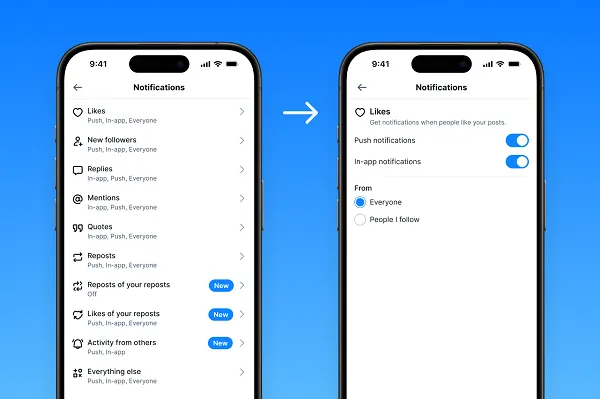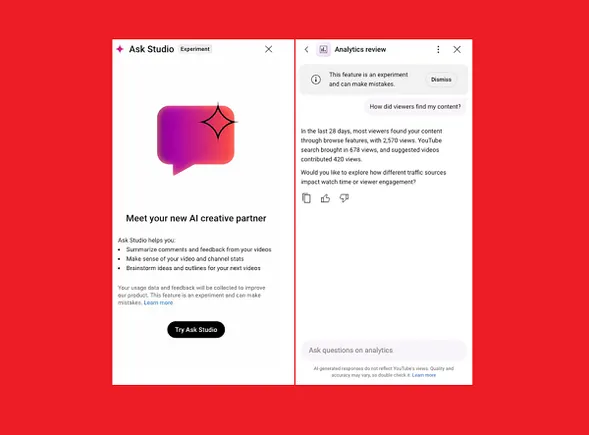Apply a performance mindset to full-funnel media to drive growth in disruptive times
Demonstrating the impact upper-funnel investment has on lower-funnel spending during an economic downturn is a game changer for brand growth and brand health.

In an ideal world, a marketer’s investment decisions would give equal consideration to short-term financial goals and the long-term health of their brands. But the current marketing environment is far from ideal. Ongoing economic pressures are causing marketers to make budget cuts that prioritize short-term, easily measurable tactics at the bottom of the funnel at the expense of upper-funnel strategies whose immediate impact and ROI are much less clear.
These choices are often based on an assumption that since the upper funnel will never deliver the type of return on ad spend (ROAS) that the lower funnel does, it is more difficult to defend those parts of the budget to the C-suite in times of economic uncertainty. Thus they become the proverbial low-hanging fruit. But what if marketers could bring a deeper level of measurement and accountability to the entire funnel while demonstrating the impact that upper-funnel investment has on lower-funnel spending?
That would be a game changer for the majority of marketers who view full-funnel media as critical to the growth of the business and long-term brand health, according to a DAC-commissioned survey of global marketers conducted by Forrester Research in September 2022.
Nearly two-thirds of the survey respondents said that improving full-funnel media investment was either a high priority or a critical priority over the next 12 months, citing several benefits (see Fig. 1). But of those, nearly three in four (73%) said it was very challenging or extremely challenging to execute such a strategy in the current environment.
So how can marketers close this gap and chart a new path in 2023? It starts with bringing a performance mindset to every aspect of a brand’s creative and media strategy.
Making every dollar work harder
A performance mindset does not mean that marketers should think of all media as performance media or use the same set of KPIs across the marketing portfolio. Rather, it means building a new measurement framework in which all marketing activities are held accountable to deliver financial value regardless of their position in the funnel.
As an example, marketers can measure the halo effects of brand media—including TV and out-of-home—on branded search activity. Branded search is an effective proxy measure and a proven leading indicator of purchase intent. A full-funnel measurement framework would include a view of upper-funnel media’s impact on lower-funnel demand, such as an increase in branded search query volume, as a way to show measurable down-funnel impact to ROAS-driving channels.
In doing so, marketers can identify a true cause and effect of upper-funnel marketing that is not otherwise available when looking at upper funnel metrics alone. In essence, upper funnel should be judged on its ability to grow the lower funnel.
Marketers can also use this measurement framework to show the impact of upper-funnel investment on lower-funnel spending. With more brands investing in first-party data to build or strengthen audience profiles as third-party cookies disappear, marketers can look to the upper funnel to increase their customer count, thereby enriching and enlarging the size of their actionable first-party data set. A more robust CRM (or CDP) file can be leveraged in channel selection, targeting and messaging. This will generate more efficiencies in lower-funnel investments, which in turn drives more revenue.
At DAC, we have evidence that when our clients connect upper and lower funnel efforts with this performance mindset and a new measurement framework, they experience transformational impacts not only on immediate results, but also long-term business growth.
Right-sizing investments: Charting a path forward
Today’s marketing leaders are scrambling to right-size their investment strategies for the future. And many are uncertain how to prioritize the myriad challenges they face (Fig. 2). While the blueprint for building a full-funnel media strategy may look different at each company, there are a few bedrock principles that all marketers can follow:
Evaluate channel strategy throughout the marketing funnel. Upper funnel is not confined to TV. Channels and platforms like digital out-of-home, online video and non-branded search may all provide more measurability and accountability. Internally, reset expectations on measurement and make sure that business leaders can clearly see the interdependency between upper- and lower-funnel investments. Work to eliminate hidden organizational barriers. Centralized leadership is essential to champion full-funnel investments, but it must be supported by a holistic team all working toward the same goals—as opposed to the more common silo structure that is split between discrete groups with their own agendas and budgets. Create a single, consistent source of measurement truth. Consistent metrics across the funnel will lead to greater collaboration and clarity, as well as better outcomes. Simply because there are different roles that each part of the funnel contributes does not mean the entire funnel cannot, and should not, be wired for performance.Today’s economic pressures are real. And marketers can always cherry-pick parts of the budget that seem expendable to satisfy short-term needs. But this does a disservice to brands over the long haul, as it eventually reduces the size of the addressable audience and causes brands to market to the same audiences continually. Laying the groundwork for a full-funnel approach now will ensure that brands maximize ROI, optimize their strategies at each stage of the customer journey and remain healthy and strong throughout the course of next year—and beyond.

 Astrong
Astrong 
































